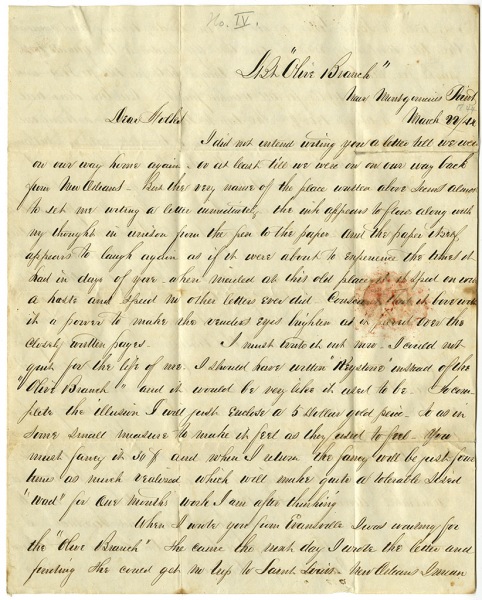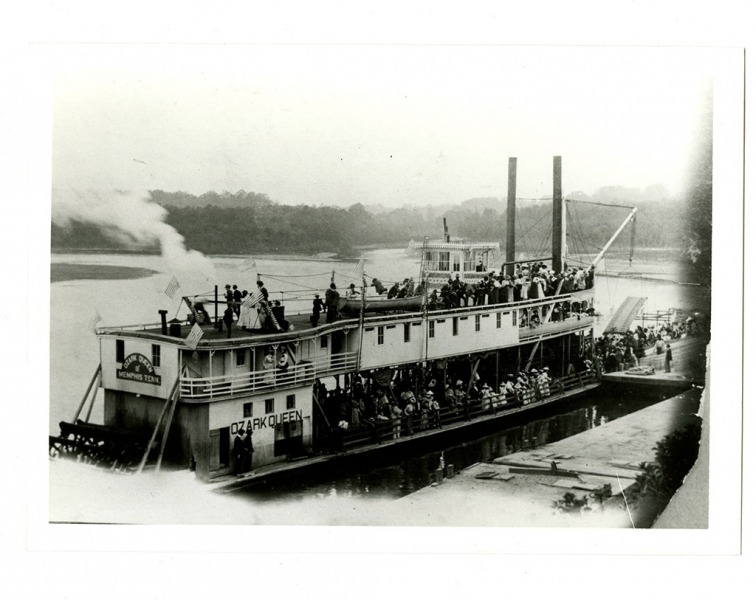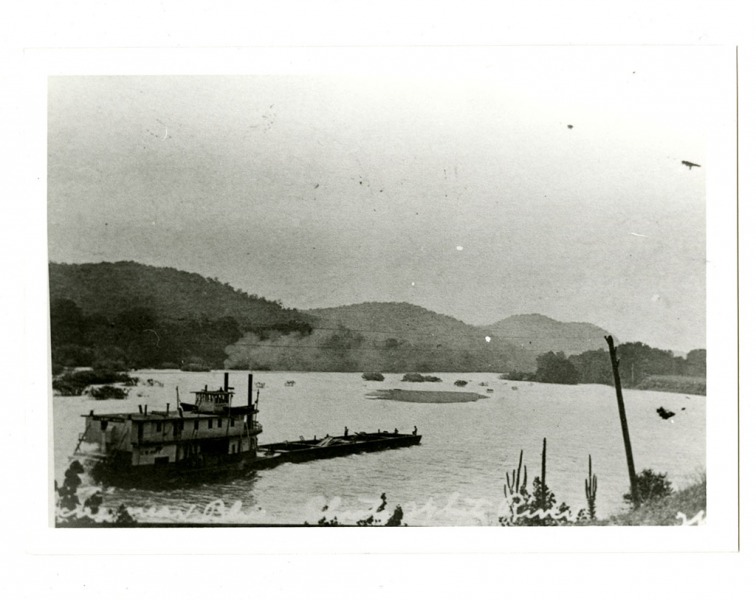From the 1830s to the 1870s the steamboat was the most popular form of transport for people and their baggage from the Appalachians almost to the Rocky Mountains, and for shipping out everything from bags of corn and fresh produce to bales of cotton heading downriver, and for bringing pianos to crates of dishes to fresh oysters going upstream. The steamboat allowed a person to go to the next town on the water or halfway across the country, usually in safety and comfort. Today it would be like if every small town had an airport with planes that could carry those people and cargo to destinations nearby and faraway.
The big boats on the Mississippi, incredibly long and incredibly narrow, captured the glory with their towering white sides (pilot house at the top sitting on the “Texas” deck, then the “boiler” deck with its passenger cabins and the Grand Salon down the middle, all resting on the main deck with its elaborate machinery and steam boilers) elaborate jigsawn trim, enormously tall smokestacks, and huge paddle wheels whether on the sides of the hull or at the back end of the vessel. Smaller and smaller steamboats that drew as little as one foot of water also ran on the smaller and smaller streams, from the Cumberland River to the Tennessee River, to the Ohio River and on to the Mississippi, and from the Ouachita and Arkansas Rivers and the Black River to the White River to the Mississippi as well.
The steamboat had to be invented, however, from adapting flat bottom wooden hulls, to developing engines powerful enough to push 300 foot boats loaded with over 1000 cotton bales, and perfecting steam boiler systems from which engineers could convince high-temperature steam to operate the hydraulic systems to push the paddle wheels that moved the vessels through the water. The 1820s was a decade of experimentation. The boats reached their near final form in the 1830s, but it was the 1840s if not the early 1850s before engineering skills, metalworking, and state and federal regulations came together to produce the best quality steamboats. They subsequently played a crucial role during the Civil War transporting troops and supplies, and some being turned into “tin clad” gunboats or built from the ground up as tough armored gunboats. Unfortunately, the Civil War also brought to maturity the railroads, and their advantages in areas not served by riverboats led them to dominate passenger and freight travel after the 1870s.
The steamboat as a form of transportation did have its disadvantages, not the least of which were regular seasons of the year (particularly summer and fall) in which there was not enough river water to float most boats. When there was enough water, there were the hazards of trees that fell into the water from collapsing banks due to rivers constantly changing their course. The trees would float or become fixed in the bottoms of the rivers, and when hit would easily pierce mortal holes in the wooden hulls. More significant perhaps was the combination of boilers fired by wood or coal and the lightly built wood structures in close proximity to those somewhat untrustworthy boilers. Fires, exploding boilers, sinking's, and other accidents ranging from human error to severe storms to failure of other equipment were often horrible and tragic events, but they were taken as hazards of normal travel worth the risk, much like later train wrecks and the daily car wrecks that kill people today.
The ultimate fragility of the relatively thin wooden hull was not overcome until the development of steel plates that can be used to make all metal hulls in the late 1900s. Metal hulls plus diesel engines plus propellers equal the big towboats of today that can push as many as 32 barges upstream on the Mississippi.
Leslie C. "Skip" Stewart-Abernathy is an Archeologist for Arkansas Archeological Survey, and is stationed at Winthrop Rockefeller Institute on Petit Jean Mountain.



